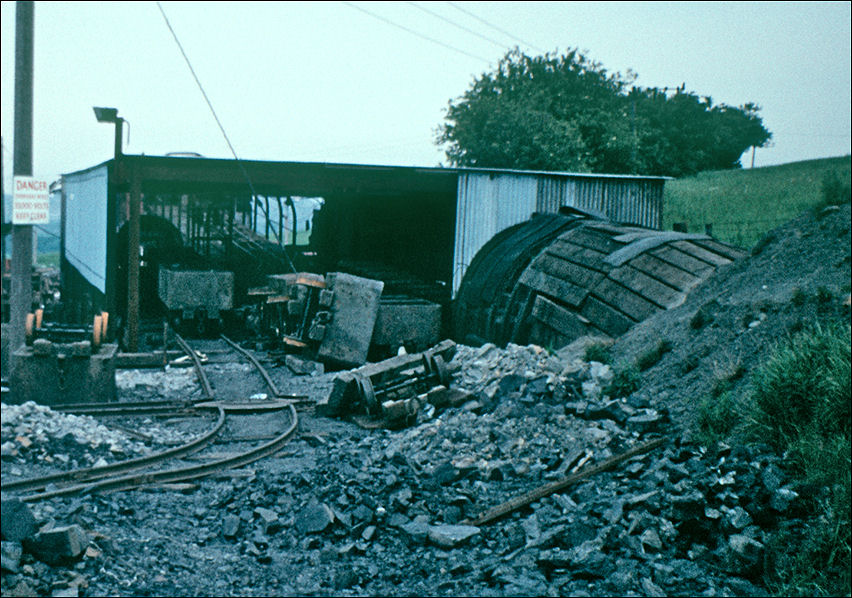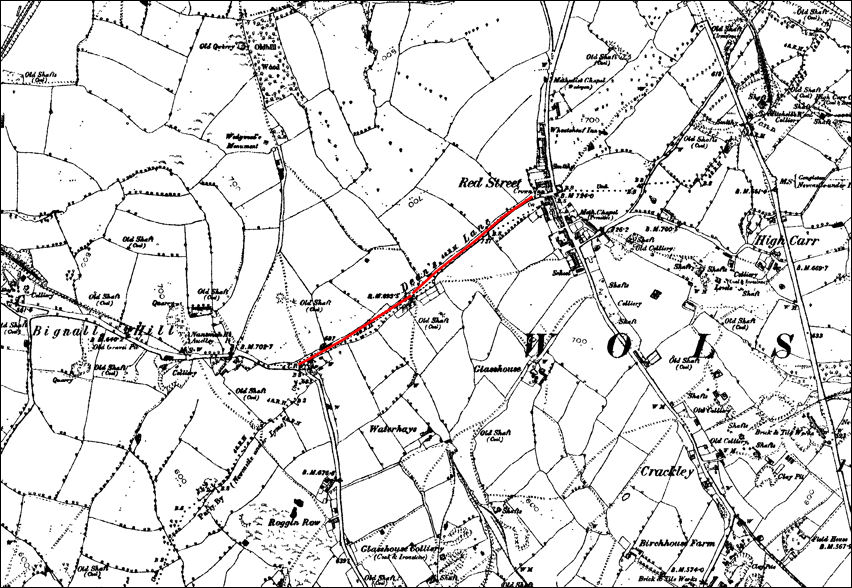|
Red
Street, Wolstanton,
Staffordshire.
Simeon Shaw says
that a hundred years before the time of Dr Plot's visit to
Staffordshire (i.e. about 1577 the potters of Red Street were
producing 'considerable quantities of all kinds of vessels then
used' (History of the
Staffordshire Potteries, 1829).
During the
eighteenth century the potters of Red Street, Elijah Mayer (who
perished near Ulverston) and Moss 'fabricated greater quantities
of pottery than any others of the whole district'. Probably the
stabilising of the cream-coloured earthenware body killed the
trade in the Red Street country crockery.
The Moss family were
the last in Red Street to make crockery, but abandoned it about
1845 for bricks and tiles which they had been making from the
eighteenth century.
Thomas
and Henshall Moss are listed as early as 1796 as manufacturers
of earthenware, bricks and tiles.
Henshall Moss also kept the 'Wheat Sheaf' in Red Street. He died
in 1833 at the age of 78 (Staffordshire Advertiser, 3 March
1833) and was succeeded by other persons of the same name who
made bricks and farmed land in this area until 1889 or later.
Richard Moss made earthenware and Egyptian black at Red Street
where he also kept the 'Crown Inn' in 1834. He died in 1847 aged
64 (Staffordshire Advertiser, 4 November 1847).
Samuel Riles,
potter, occupied a potworks in Red Street until 1815 when it was
offered for sale (Staffordshire Advertiser, 11 February 1815). It
was stated to be 'on the line of a road which cannot fail to
command and ensure an excellent ready Money Retail Trade from
Travellers'. This factory was probably taken over by Benjamin
Myatt who is recorded here in 1818.
Staffordshire
Advertiser; Directories; Simon Shaw - History of the
Staffordshire Potteries, 1829; Mankowitz & Hagger – English
Pottery & Porcelain. |
![]()



